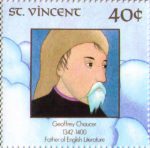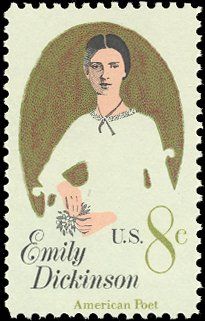![[Snowflakes]](https://riverhouses.org/wp-content/uploads/2025/01/snowflake-emoji-150x150.png) The northeastern U.S. is going to get hit with a big blizzard tonight and up to a foot of snow is expected in some locations, with frigid temperatures extending all down the east coast. That makes this a perfect time for a bonus homeschool poem-of-the-week for everyone who will be encountering the north wind’s masonry: Ralph Waldo Emerson’s frosty “Snow-Storm,” one of the most commonly anthologized poems of nineteenth-century America. (When you’re homeschooling, every blizzard is a learning opportunity!)
The northeastern U.S. is going to get hit with a big blizzard tonight and up to a foot of snow is expected in some locations, with frigid temperatures extending all down the east coast. That makes this a perfect time for a bonus homeschool poem-of-the-week for everyone who will be encountering the north wind’s masonry: Ralph Waldo Emerson’s frosty “Snow-Storm,” one of the most commonly anthologized poems of nineteenth-century America. (When you’re homeschooling, every blizzard is a learning opportunity!)
The Snow-Storm
Announced by all the trumpets of the sky,
Arrives the snow, and, driving o’er the fields,
Seems nowhere to alight: the whited air
Hides hills and woods, the river, and the heaven,
And veils the farm-house at the garden’s end.
The sled and traveller stopped, the courier’s feet
Delayed, all friends shut out, the housemates sit
Around the radiant fireplace, enclosed
In a tumultuous privacy of storm.Come see the north wind’s masonry.
Out of an unseen quarry evermore
Furnished with tile, the fierce artificer
Curves his white bastions with projected roof
Round every windward stake, or tree, or door.
Speeding, the myriad-handed, his wild work
So fanciful, so savage, nought cares he
For number or proportion. Mockingly,
On coop or kennel he hangs Parian wreaths;
A swan-like form invests the hidden thorn;
Fills up the farmer’s lane from wall to wall,
Maugre the farmer’s sighs; and, at the gate,
A tapering turret overtops the work.
And when his hours are numbered, and the world
Is all his own, retiring, as he were not,
Leaves, when the sun appears, astonished Art
To mimic in slow structures, stone by stone,
Built in an age, the mad wind’s night-work,
The frolic architecture of the snow.
![[Ralph Waldo Emerson]](https://riverhouses.org/wp-content/uploads/2021/02/emerson-stamp-1940-271x300.jpg) Ralph Waldo Emerson (1803–1882), says the Poetry Foundation, “was one of the most influential writers and thinkers of the nineteenth century in the United States,” so every good homescholar should be acquainted with his name and his work. “The Snow-Storm” doesn’t sound very poetical on first reading — it has a prose-y feel, and what’s worse, it doesn’t even rhyme. How can it be a poem? Well, if you start counting — always a good practice when you’re making the acquaintance of a new poem — you’ll see some of Emerson’s skill at work: the poem has 28 lines, and nearly all of them have exactly ten syllables. That’s a sign of conscious craftsmanship. One of the misfits is the opening line of the second section, but it’s typographically indented: that’s a standard marker for a partial line in poetry and drama. And the seemingly excess syllable count in some other lines really does depend upon pronunciation: if you read tumultuous in the ninth line as four syllables, for example, then that line seems long. But I bet Emerson read it as three syllables — tum-ul-chus — making the syllable count again exactly ten.
Ralph Waldo Emerson (1803–1882), says the Poetry Foundation, “was one of the most influential writers and thinkers of the nineteenth century in the United States,” so every good homescholar should be acquainted with his name and his work. “The Snow-Storm” doesn’t sound very poetical on first reading — it has a prose-y feel, and what’s worse, it doesn’t even rhyme. How can it be a poem? Well, if you start counting — always a good practice when you’re making the acquaintance of a new poem — you’ll see some of Emerson’s skill at work: the poem has 28 lines, and nearly all of them have exactly ten syllables. That’s a sign of conscious craftsmanship. One of the misfits is the opening line of the second section, but it’s typographically indented: that’s a standard marker for a partial line in poetry and drama. And the seemingly excess syllable count in some other lines really does depend upon pronunciation: if you read tumultuous in the ninth line as four syllables, for example, then that line seems long. But I bet Emerson read it as three syllables — tum-ul-chus — making the syllable count again exactly ten.
In its content, “The Snow-Storm” can almost be read as two poems that are only loosely joined together. The first nine lines could easily stand alone as a separate work, and it’s almost tempting to think the two parts were written at different times. The first section emphasizes the storm’s effect on us, while the second section presents the storm as a builder, mason, and architect, creating overnight what it takes mortal masons an age to construct. If I were teaching beginners, I would focus on just the first section and copy it out as a complete poem, leaving the more complex second section for later study.
If you do include the second section, be sure to have your students investigate some of the wonderful vocabulary it contains. Send them to your family dictionary to look up artificer, bastions, myriad, and maugre (that’s a rare one today). And what about those “Parian wreaths” that the storm mockingly hangs on coop and kennel? You can go on a great historico-literary quest with that particular phrase. Your dictionary will tell you that “Parian” means “of or relating to [the island of] Paros or the fine white marble for which it is renowned” and also “a form of fine white unglazed hard-paste porcelain likened to Parian marble.” (Send your students to your homeschool atlas to find the island of Paros.) What, then, is Emerson’s storm doing? Overnight it’s hanging finely sculpted white marble wreaths on … temples and palaces? No, on the farmer’s chicken coops and dog kennels.
![[Parian Marble]](https://cdn0.rubylane.com/_pod/item/1575091/TMO03743/Ceramic-Parian-Ware-Bust-Classical-Maiden-full-4-720-184-f.jpg)
So if your homeschool gets caught or has gotten caught in an unexpected storm this season — or even if you just like to watch the winter weather on TV around a radiant fireplace — why not take along Emerson’s “Snow-Storm” and contemplate the north wind’s masonry and the frolic architecture of the snow.
What wonderful words and poetical productions are you and your students examining in your homeschool this Orion Term? ❄️
❡ The tumultuous privacy of storm: If a special line or turn of phrase happens to strike you in one of our weekly poems, just copy it onto your homeschool bulletin board for a few days and invite your students to speak it aloud — that’s all it takes to begin a new poetical friendship and learn a few lovely words that will stay with you for life. 🌨
❡ Literary lives: The website of the Poetry Foundation includes biographical notes and examples of the work of many important poets (including Ralph Waldo Emerson) that are suitable for high school students and homeschool teachers. ✒️
❡ This is a printable lesson: Down at the bottom of this post you’ll find a custom “Print” button that will let you create a neat and easy-to-read copy of this little lesson, and it will even let you resize or delete elements that you may not want or need (such as images or footnotes). Give it a try today! 🖨
❡ Here, said the year: This post is one of our regular homeschool poems-of-the-week. Print your own River Houses Poetry Calendar to follow along with us as we visit fifty of our favorite friends over the course of the year, and add your name to our River Houses mailing list to get posts like these delivered right to your mailbox every week. 📫
❡ Homeschool calendars: We have a whole collection of free, printable, educational homeschool calendars and planners available on our main River Houses calendar page. They will help you create a light and easy structure for your homeschool year. Give them a try today! 🗓
❡ Support our work: If you enjoy our educational materials, please support us by starting your regular Amazon shopping from our very own homeschool teaching supplies page. When you click through from our page, any purchase you make earns us a small commission at no extra cost to you. Thank you for helping us to keep going and growing! 🛒
❡ Join us! The aim of the River Houses project is to create a network of friendly local homeschool support groups — local chapters that we call “Houses.” Our first at-large chapter, Headwaters House, is now forming and is open to homeschoolers everywhere. Find out how to become one of our founding members on the Headwaters House membership page. 🏡




